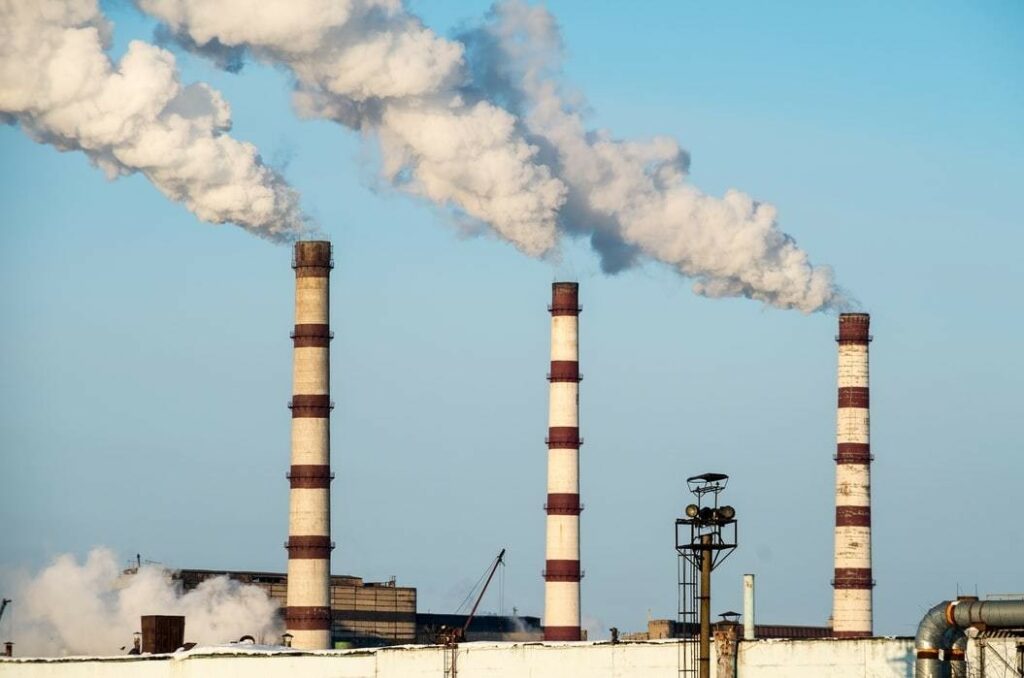In this new series we’re surveying past estimates of Equilibrium Climate Sensitivity (the crucial absolute amount of warming to be expected from any relative doubling of atmospheric CO2 – see Backgrounder here) based on observations rather than computer models. These days the latter say ECS is between 1.8C and 5.6C. And the range matters, a lot, because economists say that if it’s about 2C or under then global warming is not a problem and climate policy of any meaningful sort is not worth the cost. So what does the climate itself say? Back in 2012 a group of climatologists led by Michael Ring of the University of Illinois crunched the historical numbers and concluded that, if you use the NASA temperature data ECS is about 1.5C, if you use the NOAA data it’s about 2.0C and if you use the HadCRUT data from the Climate Research Unit it’s about 1.6C. But you might be surprised what the authors thought this modest range of numbers proves.
The article opens by lamenting the sorry state of understanding of the unwashed plebes, otherwise known as the US public. Only about half, according to surveys in 2010 and 2011, believe that “pollution from human activities” is responsible for most climate change, and this translates into political resistance to major emission reduction policies. So, the authors decided to write a super-simple article that anyone in the public could understand to prove that greenhouse gases really are to blame.
We don’t much like the idea of scientists writing articles with the intent of pushing a political agenda. But in this case there wasn’t any danger that the public would rush to read it because their “simple” approach involved developing two mathematical models, one a climate forcing equation estimated based on the minimized root mean squared error, and the other a Singular Spectrum Analysis using quasi-periodic oscillations. Got that? Way to reach out to the rubes.
Whatever the fancy jargon means, other than that university science faculties could usefully add a course on clear communication, when the data were plugged in and the results popped out the authors noted with great satisfaction that greenhouse gases are responsible for most of the warming, at least in the last few decades. Even though, they admitted with some puzzled chin-stroking, ECS is awfully low compared to the IPCC range of 1.5C to 4.5C. And they had to admit that warming in the period before 1944 and cooling from 1945 to 1976 was mainly natural. Greenhouse gases only took over from 1977 to 2010. So it’s not exactly a stinging rebuttal to the dunces off campus.
Especially when it adds yet more evidence that ECS is 2C or less. Despite which the authors came out thinking exactly what they thought going in, namely full steam ahead for climate policy:
“Climate scientists of course know that the large imbalance between current CO2 emissions and natural removal processes, and the long resident lifetime of CO2 in the atmosphere, render the “wait-and-see” approach impossible and dangerous. Mitigation of human-caused climate change requires immediate corrective action... We hope this study contributes to a public realization that emissions reductions are necessary to safeguard Earth’s climate.”
Well of course you do. Never mind what your research actually found.
Again, to reiterate, we don’t think very highly of scientists writing reports to push a political or even a policy agenda. Give us the numbers and let the public decide based on the costs as well as the benefits of the policy proposal. And in this case, contrary to the authors’ claims, a 1.6C value for ECS is not dangerous, and implies the wait-and-see approach is the right one.



The thing that I always miss in these ECS studies is: what are you taking OUT of the atmosphere that you're replacing with CO2? If you increase your CO2 from 300 to 400ppm, that means you need to take 100ppm of something else out.
It could be water, which is a much more potent greenhouse gas (ignoring all the other complex weather interactions), which would likely result in a reduced greenhouse effect (GE).
It could be methane, which is also a much more potent greenhouse gas ->reduced GE.
It could be nitrogen (or Argon), but how? N2 doesn't interact with the earth nearly as much as H2O does and Argon is a noble gas, not interacting with anything much.
It could be O2, but more CO2 = more plants = more photosynthesis = MORE O2, so this would at best be a temporary thing before O2 would start replacing something else.
The most likely is H2O in my opinion, which also immediately results in discussions about ECS being irrelevant as the net effect will be a reduction.
Let's get one thing straight JR. Never, in the entire history of man, has any scientific theory ever been proven correct without some sort of controlled experiment or, as Faraday put it: "Hypotheses cannot be freely invented but must have some experimentally verifiable aspect" . That is the rock solid foundation of the scientific method and to try to undermine same by simply doing algorithmic math ( even with raw data that's varying wildly and randomly) is not only a fool's paradise, it sets a dangerous precedent . The CO2 theory is exactly that - a complete fabrication that was literally "freely invented" and never challenged directly because as Arhenius himself said in 1896: no one wants to pay for the "expensive apparatus" to prove it one way or the other. In other words, you are willing to sacrifice the principles of the scientific method because you're too cheap to pay the piper for the ATMOSPHERIC CLIMATE TESTING SIMULATOR (www.dextras.com/climate.html) that will put an end to this debate once and for all. The ECS results that will be generated by the 108 different test conditions will do exactly that because it complies 100% with the laws of thermodynamics, which as Einstein himself so correctly put it, "will never be proven wrong". You take it from there JR.
Kenneth G. Dextras, B. Eng., McGill '76
Job Mulder, I guess the part of the atmosphere that CO2 replaces must be oxygen. The oxygen atoms combine with stored carbon to release CO2. However, there is also oxygen released again from live vegetation. I'm not sure whether the atmosphere's density must or does remain absolutely constant? Water vapor must have a significant impact on climate, so must vegetation - and a lot of other things.
Or am I missing a point here?
Anders Bonde, if the pressure increases you can put more molecules in the same volume of air, but the models and measurements all talk about ppm (parts per million). This is a fraction of the air, not an absolute measure. As fractions go, (we have a pie and both get 50%), if you increase one part (you get 60%) you must reduce another (I only get 40%). We can just buy another pie and both have one, but then we still both get 50%. Since we're measuring the fraction of 'a single pie' here, something has to give... If I fill a bucket with water, the air in the bucket will go somewhere else, but as I'm filling it, the ppm of the water will keep going up, while the ppm of the air will go down. As I'm doing that, the heat capacity of the bucket's contents will change with the rising ppm of the water, since I'm pushing out air.
I have seen charts of the major components of atmospheric composition for a billion years, but neither for the entire composition of our atmosphere nor for only the last 50 years or so.
If, as you say CO2 replaces O2, which _could_ happen, I would like to see that it in fact does so. Since CO2 is heavier than O2 and the exchanges happen mostly close to the ground, it's also interesting to see this chart at different atmospheric levels. At Mauna Kea they measure CO2 levels, I'm pretty sure they also measure the other elements, because scientists... And I'm certain it's being measured at different places all over the world. I just have never seen the graphs where CO2 goes up and something else goes down.
All that being said, I need to correct my earlier Nitrogen statement. After doing some research I found that it does, in fact exchange quite a bit between atmosphere, nature and fossil fuels. But still, the question remains: what gets 'replaced' (ppm-wise) by CO2? And what does that do to the total 'greenhouse effect'?
It's all speculation until someone posts their measurements.